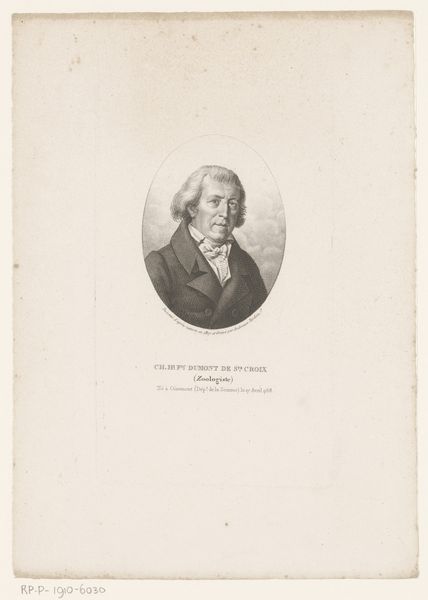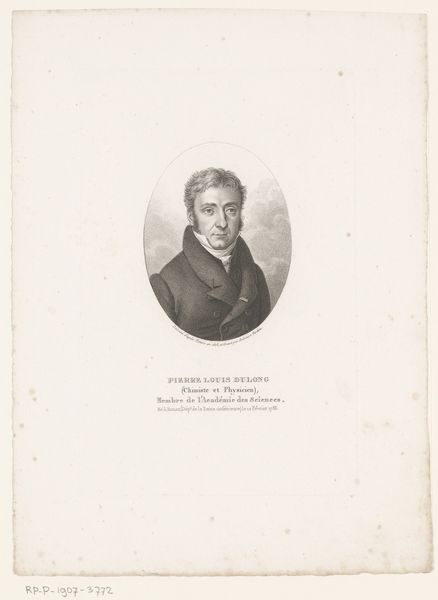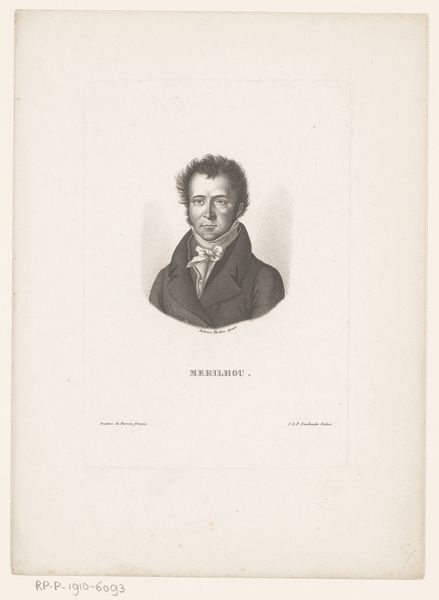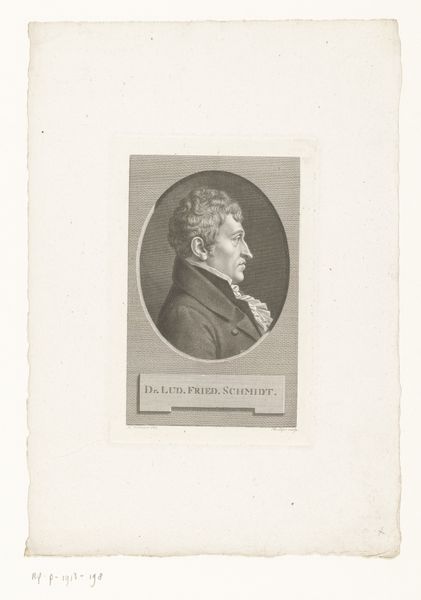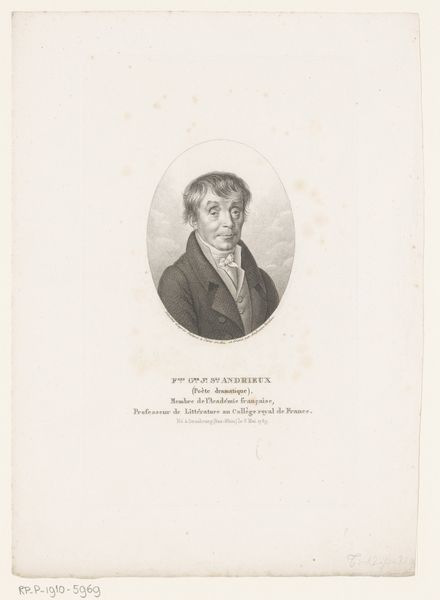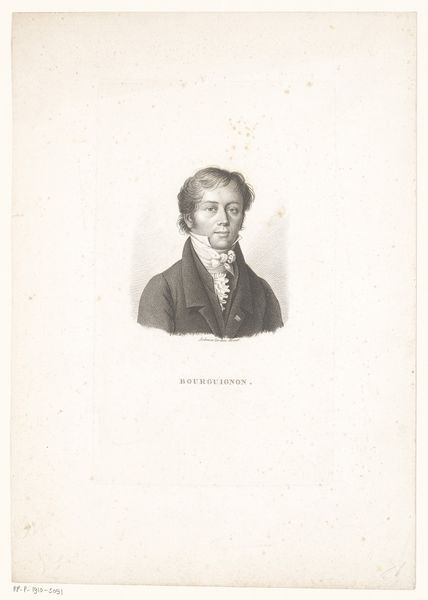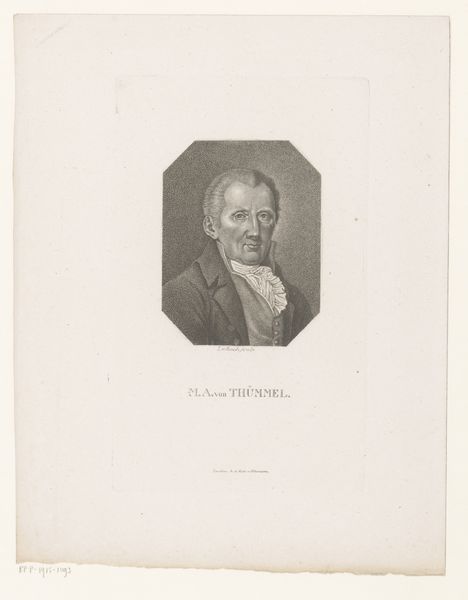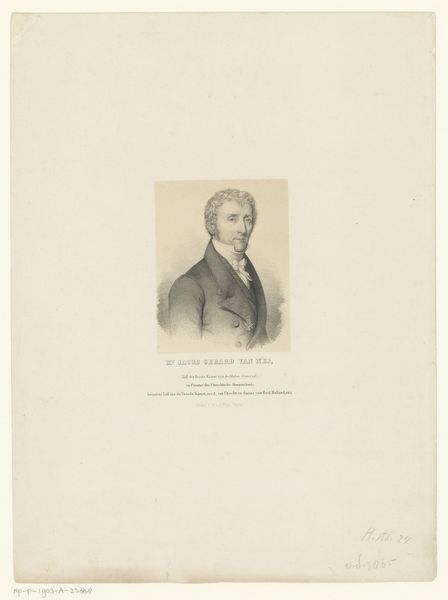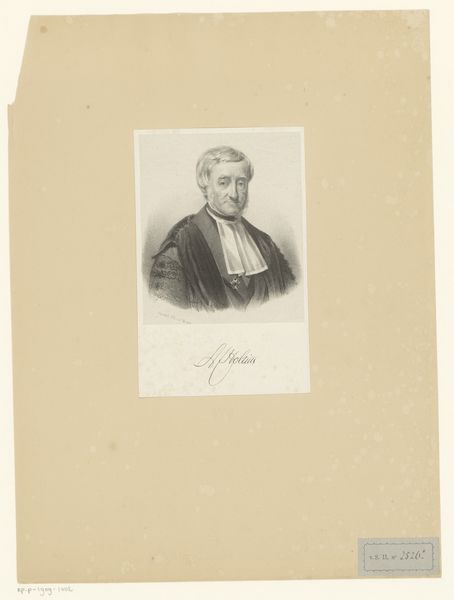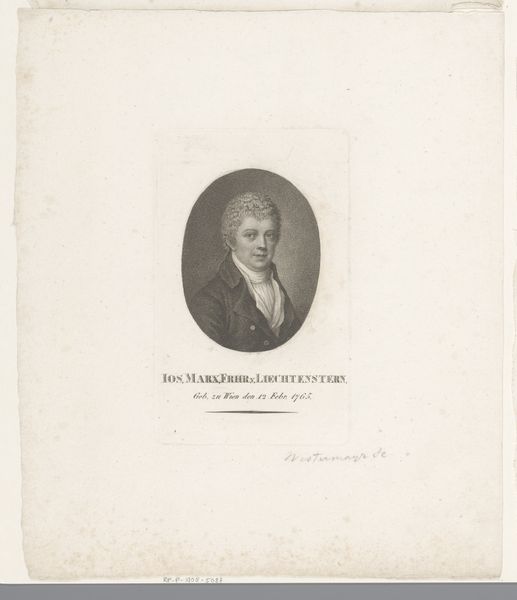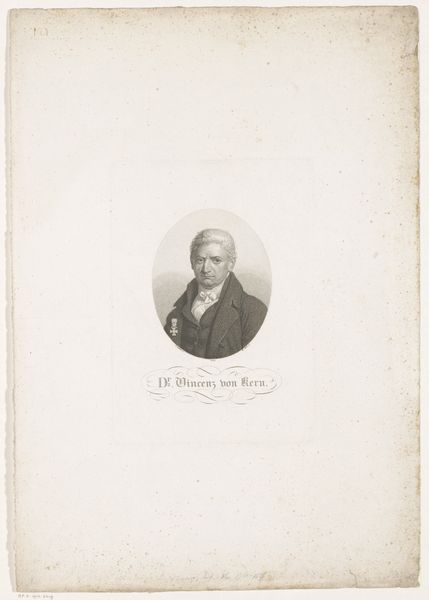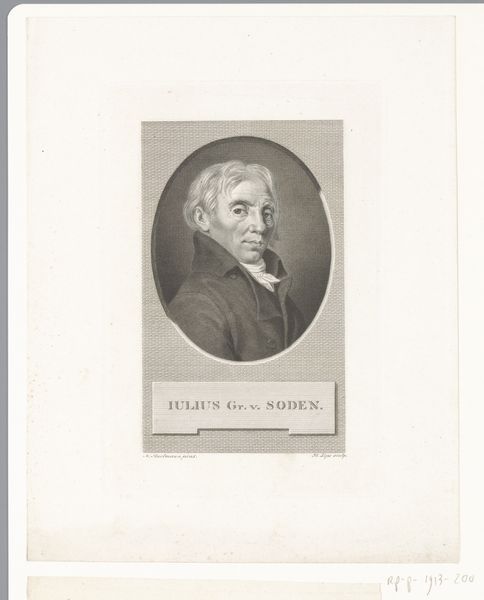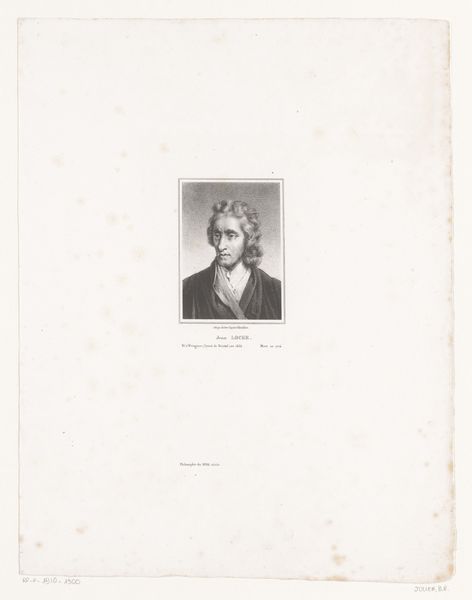
print, paper, engraving
#
portrait
#
neoclacissism
#
aged paper
# print
#
old engraving style
#
paper
#
history-painting
#
engraving
Dimensions: height 220 mm, width 138 mm
Copyright: Rijks Museum: Open Domain
Charles Aimé Forestier made this portrait of A.C. Guichard using lithography, a printmaking technique that really took off in the 19th century. Lithography involves drawing on a flat stone or metal plate with a greasy substance, then applying ink, which adheres only to the drawn areas. This print is quite small, so the texture of the stone is almost imperceptible. But the artist used delicate hatching to render the tones of Guichard’s face and clothing, and the precision of the lithographic process meant that many identical copies could be made quickly and cheaply. This was a huge shift from earlier, more labor-intensive printmaking methods like etching and engraving. Lithography democratized image-making, making portraits like this accessible to a wider audience, not just the wealthy elite who could afford painted portraits. The rise of lithography is closely tied to the Industrial Revolution and the growth of consumer culture. It allowed for mass production of images, fueling advertising and the spread of information. So, next time you see a lithograph, remember it's not just a pretty picture, but a product of its time, reflecting the changing landscape of art, labor, and society.
Comments
No comments
Be the first to comment and join the conversation on the ultimate creative platform.

